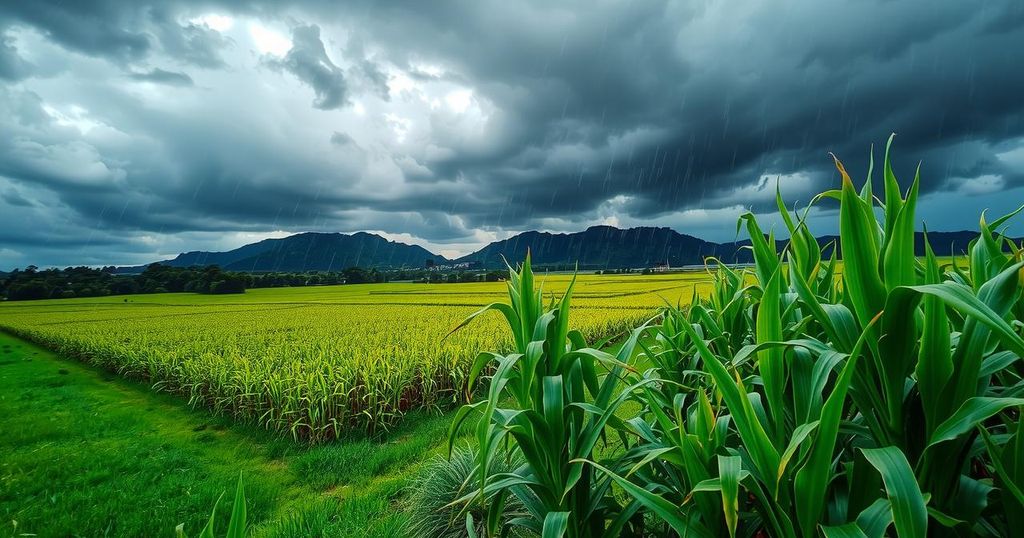Sugar Prices Decline Amid Brazil’s Rain Forecast and Currency Fluctuations

Sugar prices have declined to two-week lows due to forecasts of rain in Brazil and a weakened Brazilian real, enabling increased export activity. Recent adjustments to production estimates by various organizations indicate a tightening sugar market. Additionally, the global context shows potential increases in production from Thailand, which may further influence market dynamics.
Sugar prices recently experienced a decline, reaching two-week lows. The forecasted rainfall in Brazil alleviates concerns regarding drought and is contributing to this downward trend. Meteorologist Climatempo anticipates extensive showers across Brazil’s sugar-producing areas in the coming week, which may further influence sugar price dynamics.
Additionally, the Brazilian real has weakened, reaching a two-week low, which further depresses sugar prices as it incentivizes Brazil’s sugar producers to increase exports. Last Tuesday, both New York and London sugar markets recorded highs due to indications of diminishing global sugar production, yet the current forecast for rain has reversed this momentum.
Recent reports indicate declines in sugar production estimates. The Indian Sugar and Bio-energy Manufacturers Association reduced its 2024/25 sugar production forecast to 26.4 million metric tons (MMT) from 27.27 MMT. Moreover, Unica has reported a 5.3% year-on-year decrease in sugar output in Brazil’s Center-South region through mid-March.
The International Sugar Organization has also revised its projections, revealing a projected global sugar deficit of -4.88 MMT for 2024/25, an increase from previous estimates. Additionally, this organization lowered its sugar production forecast to 175.5 MMT, highlighting market tightening from earlier surpluses.
Despite certain bearish projections, including a potential recovery in Brazil’s sugar production in 2025/26 predicted by Datagro, the outlook remains uncertain. The Indian government has also eased export restrictions on sugar, which may further impact market conditions.
Furthermore, projections from Thailand indicate a notable rise in sugar production, with estimates suggesting an increase of 18% for 2024/25. Such forecasts from this key producer may add bearish pressure to sugar prices globally.
Damage caused by drought and heat-related fires in Brazil’s Sao Paulo region has led to significant sugar cane losses, with estimates indicating a potential loss of 5 MMT. Consequently, Brazil’s crop forecasting agency, Conab, has adjusted its production estimates lower due to yield concerns.
According to the USDA’s recent report, global sugar production is expected to increase by 1.5% to a record 186.619 MMT for 2024/25, alongside a similar increase in global sugar consumption. Nonetheless, global ending stocks are projected to decrease by 6.1%, indicating potential market tightness ahead.
The sugar market is currently influenced by a combination of weather forecasts in Brazil, fluctuations in the Brazilian real, and adjustments in production estimates globally. Forecasts of rain in Brazil are mitigating drought concerns, while a weaker real enhances export opportunities. Both production and consumption trends are critical as the market transitions into a potentially tighter scenario for the upcoming year. Monitoring these developments will be essential for stakeholders in the sugar industry.
Original Source: www.tradingview.com







